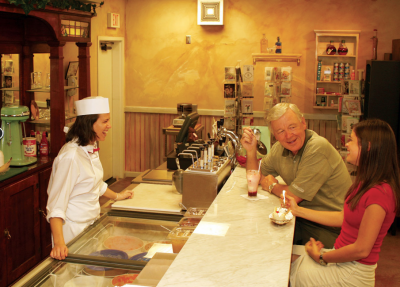 Challenging behavior is a catch-all term that, in the context of dementia, includes one or combinations of things like shouting, wandering, biting, throwing things, repetitive talking repetitive movements, destroying personal possessions and other objects without regard for whom it belongs, agitation and general anger, physical or verbal attacks on others, waking others at night, making sexually inappropriate comments, disrobing inappropriately, and urinating or defecating in undesirable locations. This is not an all-inclusive list and I am sure you can think of many more examples that fit under the umbrella term of challenging behavior.
Challenging behavior is a catch-all term that, in the context of dementia, includes one or combinations of things like shouting, wandering, biting, throwing things, repetitive talking repetitive movements, destroying personal possessions and other objects without regard for whom it belongs, agitation and general anger, physical or verbal attacks on others, waking others at night, making sexually inappropriate comments, disrobing inappropriately, and urinating or defecating in undesirable locations. This is not an all-inclusive list and I am sure you can think of many more examples that fit under the umbrella term of challenging behavior.
These behaviors are often surprising and disruptive, and we want the behaviors to stop, we do not understand them, and we see that the problem is with the person having the behavior…. but what we need to remember is the person who is living with dementia and is displaying the challenging behavior is really only trying to communicate an unmet need to us, and we are getting it!
As dementia progresses it limits and impairs the way a person once knew how to communicate, and their attempts to make us understand what they are seeing, feeling, smelling, tasting, or sensing. They may express themselves in a negative way, a way that we call, you guessed it – a challenging behavior.
Let us take a step back for a minute. Maybe if we thought of the challenging behavior as a form of communication we would not be so quick in trying to stop the behavior, maybe we would take a step back, and take time to understand the behavior and then realize it is a behavioral expression.
A person living with dementia may express through their behaviors what they like or do not like about whats going on around them, about their environment or what a caregiver is doing right or wrong for them and often without us knowing we are the cause of the challenging behavior. Mind blowing right!?
Let’s think about this example
Sally is a pleasantly confused woman who is a newer resident living in a memory care facility. She is unable to fully communicate needs verbally but if cued and given enough time she can complete most ADL’s without out hands-on assistance, she generally is very cooperative with staff. However, every morning staff has reported to their manager that when they are getting Sally ready for the day she will bite them when they are trying to assist her. The staff is now refusing to provide care to Sally in the morning because of her biting problem and they want to give her medicine to calm her down.
OK…Now let us think. What is the problem here? I’ll give you a clue…It is not Sally’s biting problem. If you said the staff’s approach you were correct, clearly Sally is not appreciating the help she is receiving in the morning to get dressed. To understand why Sally is biting we need to try and figure out what she is is trying to tell us.
Here are some things to consider
- Maybe residents feel they are being rushed
- Maybe the staff is not giving clear one step directions
- Maybe it is cold in the room and Sally doesn’t like being cold when she dresses
- Maybe Sally doesn’t like to get up until 9 am and we are trying to get her up at 6
Or
- Maybe her behavior is because we don’t understand the uniqueness of Sally and we haven’t take the time to get to know her. If we had talked to her family, we would have discovered that Sally always got up, put her robe and slippers on, made her coffee and enjoyed a cup while reading the newspaper before starting her day.
In this case, Sally just wanted to follow her routine, a routine she had done for years, a routine that felt normal and safe. When caregivers came into her room to get her dressed Sally may have felt out of sorts because she was used to doing things a certain way, she may have felt uncomfortable not following her routine and she may have felt threatened if staff was trying to rush her or if she didn’t understand.
When we seek to unravel the mysteries of behavioral expression in dementia we are not only going to help our resident, but we will be helping ourselves! Start putting the pieces together to help create that person-centered environment we all long to be a part of.
Emmy Kaczmarksi, RN is a Master Trainer for AGE-u-cate® Training Institute, Dementia Educator, Behavioral Specialist, and works at White Pine Senior Living in Hudson, WI.
http://www.AGEucate.com
 How do you create a senior care community that truly enhances the lives of their residents? By doing the right things for the right reasons. Vitality, joy and celebrating the excitement of living was exactly what I felt from the time I entered the doors of Cherrywood Village Retirement Community in Portland, OR last week.
How do you create a senior care community that truly enhances the lives of their residents? By doing the right things for the right reasons. Vitality, joy and celebrating the excitement of living was exactly what I felt from the time I entered the doors of Cherrywood Village Retirement Community in Portland, OR last week.
 With today’s emphasis on person centered care, communication skills are essential. Any senior care or hospice professional regularly interacts with people with communication challenges stemming from brain injury, stroke, hearing loss; Parkinson’s disease or Alzheimer’s disease.
With today’s emphasis on person centered care, communication skills are essential. Any senior care or hospice professional regularly interacts with people with communication challenges stemming from brain injury, stroke, hearing loss; Parkinson’s disease or Alzheimer’s disease.